
Professional Socialization in Medicine
AMA Journal of Ethics February 2015, Volume 17, Number 2: 160-166 MEDICINE AND SOCIETY Professional Socialization in Medicine Brandon Vaidyanathan, PhD, MSc Professions such as medicine lay claim to expertise and jurisdiction over specific sets of tasks [1]. They are social structures that have a cultural dimension, with distinct norms of interaction, registers of evaluation, systems of meaning, and myths, symbols, and rituals that govern professional life [2, 3]. Professional culture in medical schools includes norms of interpersonal interaction among peers, between superiors and subordinates, and towards patients; criteria for evaluating whether actions, desires, and goals are worthy/unworthy or laudable/deplorable; beliefs about, for example, what areas of specialization are more “difficult,” what personal sacrifices are justifiable for the sake of the profession, what sort of candidate would be a good “fit” for a position, and what emotions one should or shouldn’t express; and shared tastes and dispositions [4-9]. Professional cultures also include socialization rituals. For instance, classical sociological studies on medical professionalization depict medical schooling as a rite of passage during which neophytes are structurally separated from their former environments, then transition through a liminal phase in which they are (at least symbolically) stripped of their former external identities, and finally are collectively incorporated into their new roles [10, 11]. Formal socialization can transmit certain aspects of professional culture, such as beliefs about what it means to be a responsible and caring physician and codes of ethics by which to abide. But professional cultures also powerfully shape trainees’ values and behavior through informal and tacit modes of socialization and implicit influences at the organizational and structural levels—what some call the “hidden curriculum” [11-13]. In medicine, the hidden curriculum can undermine formal goals of professional socialization, contributing to “ethical erosion” among medical students [14, 15] and raising important questions about how curricular and institutional reform should proceed [12, 16]. In what follows, I discuss structural and cultural means by which professional cultures are communicated to new members. In doing so, I highlight the effects of hidden messages in medical education on doctors in training, particularly on their ethical development. Communicating Professional Culture in Medicine Structures. At the structural level, institutional arrangements such as reward systems, institutional policies, or the racial and gender composition of professions can send messages about cultural values, some of which are harmful. For instance, these messages can sustain discriminatory tendencies and constrain equal access to opportunities. In medicine, women and members of marginalized groups may not be seen by gatekeepers and mentors as a “good fit” for subfields that are perceived as more demanding (which 160 www.amajournalofethics.org also tend to be seen as more prestigious), and as a result might be turned away from these subfields or might realign their own preferences and opt out of these subfields [17]. Established hierarchies also protect unprofessional behaviors on the part of educators, whom students feel too vulnerable to challenge [18]. Narrative scripts. Narrative scripts are ideas about the kind of self one ought to become that are internalized and shape students’ ideas of what desires, attitudes, behaviors, and dispositions are expected or unbecoming of professionals. They can take the form of declarative injunctions, directives, assertions, and statements as well as messages implicit in such communications. For example, during the medical school orientation process, narrative scripts abound that signal to students their privileged status and new identities: You are no longer John or Mary. You are John-physician-in-training. It’s part of your identity now. There are hundreds of people who would kill to be in your spot right now. Narrative scripts also include warnings and instructions that shape interpersonal interactions and conduct: My third-year mentor told me never to ask questions during rotations that you could look up yourself or the doctors will just get annoyed with you. She told us, “They are going to ignore you anyway, so the best thing to do is to try to stay out of the way” (unpublished interview data, 2014). The most important professional virtue is getting along with your superiors [18]. The professional student would just do the work and not complain [18]. The influence of these scripts extends to the lifestyles and life choices that one should or should not pursue: When I asked a physician…who gave a talk on bioethics how he balances family and work life, he told me that if I’m asking those sorts of questions I might want to rethink pursuing medicine in the first place. He told me it takes incredible dedication to learn all that you need to in order to become a competent doctor and that that sort of training requires sacrifice (unpublished interview data, 2014). If you want a family, you go into pediatrics or ob-gyn or psychiatry (unpublished interview data, 2014). Dress like you’re in the upper class (unpublished interview data, 2014). When reinforced and internalized, such scripts become taken-for-granted assumptions about the requirements of professional life. In the rare moments in which people are able AMA Journal of Ethics, February 2015 161 to reflect consciously on their influence, the ethical implications of professional cultures can start to become apparent: During the chaplain-shadowing program I saw two people die within five minutes…. At one point the chaplain left to get some paperwork and I was left with the mother of the girl that just died. She started talking to me and I started to cry and I felt like all the nurses were staring at me and that I wasn’t supposed to be crying. I was supposed to just be observing. The medical student is supposed to be an invisible shadow. We’re not supposed to be experiencing, just observing (unpublished interview data, 2014). Mimesis (imitation). Professional cultures are also sustained through tacit processes of mimesis, or imitation of superiors. Medical students experience much uncertainty and anxiety—about the new jargon they must quickly become familiar with, about the limitations of their own knowledge and skills, about the limitations of current medical knowledge, about how to attract the limited attention of superiors [19, 20] while avoiding humiliation from them, about how to manage enormous drains on their time and energy, and about how to conduct themselves given the numerous conflicting expectations of their new environment [21-23]. In attempting to navigate uncertain environments, people begin to imitate models whom they perceive as successful—as possessing a greater sense of “being” or “fullness” than themselves [24]. Such imitation is not always deliberate. Students learn to become adept at managing others’ impressions of them, adopting a “cloak of competence” in front of faculty and patients [25]. They can inadvertently pick up attitudes, such as detachment from or cynicism towards patients, from peers and mentors [26, 27]. Habituation. Both technical skills and social norms are reinforced with regular practice and over time become second nature [28]—a process I have termed “habituation.” In learning surgery, for instance, students undergo a process of defamiliarization with their own bodies (e.g., having to alter habitual left- or right-handedness) and become adept at quickly interpreting and responding to a wide range of nonverbal and tacit cues [29]. Habituation also involves the cultivation of new tastes—for instance, derogatory humor towards certain kinds of patients—that may have seemed alien or offensive prior to medical school [30], as well as new dispositions, i.e., durable and socially patterned ways of feeling, thinking, and acting [28]. Decades of research suggest a progressive decline during medical school in students’ idealism about the medical profession and empathy towards patients and a concomitant increase in cynicism [10, 11, 31-37], perhaps as a psychological coping mechanism in the face of a stressful socialization process [38]. Some see these changes as evidence of “abuse,” “mistreatment,” and “traumatic de-idealization” of medical students [39-41]. These processes of cultural transmission are of ethical concern when they have harmful consequences. While some aspects of the hidden curriculum can reinforce formal education—for instance, when students encounter examples of altruism, accountability, caring, and respect [23, 42]—many scholars and educators have expressed concern about 162 www.amajournalofethics.org “ethical erosion” among medical students and believe that professional culture generates effects such as that voiced by the following student quoted in a prominent study: There are certain things that I do, and I’m not the only one, that I don’t think are right. I don’t think I should do them but I don’t think I have a choice right now. I’ve got to play the game. I don’t know if this is going to be possible, but I hope that later on after I graduate I’ll be able to run my practice the way I’d like, and not like you’re supposed to do it [23]. If—as research suggests [43, 44]—students believe that their personal values about empathy or other aspects of moral life are at odds with those held by their peers and superiors, their moral commitments may be further weakened. This can become a selffulfilling prophecy when they, in turn, discourage others from developing or expressing those values [45]. The duration and significance of this ethical decline is unclear. Scholars have long recognized that the professional culture of medical students is not the same as that of practicing physicians [10]. Do purported forms of moral “erosion” such as the loss of idealism and decline in empathy persist after medical school? While some suggest that this erosion is temporary and situational and declines towards graduation [10], others argue that it is long-lasting [32]. Other questions have been raised as well—for instance, about the validity of reported changes in empathy [46] or of survey measures due to changes over time in how the same students interpret the same survey questions [47]. Given the association between physician empathy and clinical competence [48, 49], the long-term ethical effects of structural and cultural aspects of professional socialization merit continued study—out of concern for the well-being of both physicians and patients. References 1. Abbott A. The System of Professions: An Essay on the Division of Expert Labor. Chicago, IL: University of Chicago Press; 1988. 2. Cech EA. Ideological wage inequalities? The technical/social dualism and the gender wage gap in engineering. Soc Forces. 2013;91(4):1147-1182. 3. Grusky D. Foundations of a neo-Durkheimian class analysis. In: Wright EO, ed. Approaches to Class Analysis. Cambridge, UK: Cambridge University Press; 2005:5181. 4. Bourdieu P. Homo Academicus. Collier P, trans. Stanford, CA: Stanford University Press; 1988. 5. Smith AC III, Kleinman S. Managing emotions in medical school: students’ contacts with the living and the dead. Soc Psychol Q. 1989;52(1):56-69. 6. Trice HM. Occupational Subcultures in the Workplace. Ithaca, NY: ILR Press; 1993. 7. Hall P. Interprofessional teamwork: professional cultures as barriers. J Interprof Care. 2005;19(suppl 1):188-196. 8. Cech E, Rubineau B, Silbey S, Seron C. Professional role confidence and gendered persistence in engineering. Am Soc Rev. 2011;76(5):641-666. 9. Rivera LA. Hiring as cultural matching: the case of elite professional service firms. Am Soc Rev. 2012;77(6):999-1022. AMA Journal of Ethics, February 2015 163 10. Becker HS, Geer B, Hughes EC, Strauss AL. Boys in White: Student Culture in Medical School. Chicago, IL: University of Chicago Press; 1961. 11. Haas J, Shaffir W. Ritual evaluation of competence: the hidden curriculum of professionalization in an innovative medical school program. Work Occup. 1982;9(2):131-154. 12. Hafferty FW. Beyond curriculum reform: confronting medicine’s hidden curriculum. Acad Med. 1998;73(4):403-407. 13. Hafferty FW. Professionalism and the socialization of medical students. In: Cruess RL, Cruess SR, Steinert Y, eds. Teaching Medical Professionalism. Cambridge, UK: Cambridge University Press; 2008:53-72. 14. Feudtner C, Christakis DA. Making the rounds. The ethical development of medical students in the context of clinical rotations. Hastings Cent Rep. 1994;24(1):6-12. 15. Satterwhite RC, Satterwhite WM III, Enarson C. An ethical paradox: the effect of unethical conduct on medical students’ values. J Med Ethics. 2000;26(6):462-465. 16. Christakis DA, Feudtner C. Ethics in a short white coat: the ethical dilemmas that medical students confront. Acad Med. 1993;68(4):249-254. 17. Cech EA. The self-expressive edge of occupational sex segregation. Am J Sociol. 2013;119(3):747-789. 18. Brainard AH, Brislen HC. Viewpoint: learning professionalism: a view from the trenches. Acad Med. 2007;82(11):1010-1014. 19. Lempp H, Seale C. The hidden curriculum in undergraduate medical education: qualitative study of medical students’ perceptions of teaching. BMJ. 2004;329(7469):770-773. 20. Sinclair S. Making Doctors: An Institutional Apprenticeship. Oxford, UK: Berg; 1997. 21. Fox RC. Training for uncertainty. In: Merton RK, Reader GG, Kendall PL, eds. The Student-Physician: Introductory Studies in the Sociology of Medical Education. Cambridge, MA: Harvard University Press; 1957:207-241. 22. Mizrahi T. Getting Rid of Patients: Contradictions in the Socialization of Physicians. New Brunswick, NJ: Rutgers University Press; 1986. 23. Gaufberg EH, Batalden M, Sands R, Bell SK. The hidden curriculum: what can we learn from third-year medical student narrative reflections? Acad Med. 2010;85(11):1709-1716. 24. Girard R. “To Double Business Bound”: Essays on Literature, Mimesis, and Anthropology. Baltimore, MD: Johns Hopkins University Press; 1988. 25. Haas J, Shaffir W. The professionalization of medical students: developing competence and a cloak of competence. Symb Interact. 1977;1(1):71-88. 26. Bakker AB, Schaufeli WB, Sixma HJ, Bosveld W, Van Dierendonck D. Patient demands, lack of reciprocity, and burnout: a five-year longitudinal study among general practitioners. J Organ Behav. 2000;21(4):425-441. 27. Zotti AM, Omarini G, Ragazzoni P. Can the type of organisational structure affect individual well-being in health and social welfare occupations? G Ital Med Lav Ergon. 2008;30(1)(suppl A):A44-A51. 28. Bourdieu P, Nice R. Outline of a Theory of Practice. Cambridge, UK: Cambridge University Press; 1977. 29. Prentice R. Drilling surgeons: the social lessons of embodied surgical learning. Sci Technol Hum Values. 2007;32(5):534-553. 164 www.amajournalofethics.org 30. Wear D, Aultman JM, Varley JD, Zarconi J. Making fun of patients: medical students’ perceptions and use of derogatory and cynical humor in clinical settings. Acad Med. 2006;81(5):454-462. 31. Kopelman L. Cynicism among medical students. JAMA. 1983;250(15):2006-2010. 32. Haas J, Shaffir W. The ‘‘fate of idealism’’ revisited. J Contemp Ethnography. 1984;13(1):63-81. 33. Testerman JK, Morton KR, Loo LK, Worthley JS, Lamberton HH. The natural history of cynicism in physicians. Acad Med. 1996;71(10)(suppl):S43-S45. 34. Hojat M, Mangione S, Nasca TJ, et al. An empirical study of decline in empathy in medical school. Med Educ. 2004;38(9):934-941. 35. Hojat M, Mangione S, Nasca TJ, Gonnella JS, Magee M. Empathy scores in medical school and ratings of empathic behavior in residency training 3 years later. J Soc Psychol. 2005;145(6):663-672. 36. Newton BW, Barber L, Clardy J, Cleveland E, O’Sullivan P. Is there hardening of the heart during medical school? Acad Med. 2008;83(3):244-249. 37. Hojat M, Vergare MJ, Maxwell K, et al. The devil is in the third year: a longitudinal study of erosion of empathy in medical school. Acad Med. 2009;84(9):1182-1191. 38. Parsons GN, Kinsman SB, Bosk CL, Sankar P, Ubel PA. Between two worlds: medical student perceptions of humor and slang in the hospital setting. J Gen Intern Med. 2001;16(8):544-549. 39. Silver HK, Glicken AD. Medical student abuse. Incidence, severity, and significance. JAMA. 1990;263(4):527-532. 40. Sheehan KH, Sheehan DV, White K, Leibowitz A, Baldwin DC Jr. A pilot study of medical student “abuse”: student perceptions of mistreatment and misconduct in medical school. JAMA. 1990;263(4):533-537. 41. Kay J. Traumatic deidealization and the future of medicine. JAMA. 1990;263(4):572573. 42. Karnieli-Miller O, Vu TR, Frankel RM, et al. Which experiences in the hidden curriculum teach students about professionalism? Acad Med. 2011;86(3):369-377. 43. Branch W, Pels RJ, Lawrence RS, Arky R. Becoming a doctor. Critical-incident reports from third-year medical students. N Engl J Med. 1993;329(15):1130-1132. 44. Hupert N, Pels RJ, Branch WT Jr. Learning the art of doctoring: use of critical incident reports. Harvard Student BMJ. 1995;3:99-100. 45. Schwartz B. Psychology, idea technology, and ideology. Psychol Sci. 1997;8(1):2127. 46. Colliver JA, Conlee MJ, Verhulst SJ, Dorsey JK. Reports of the decline of empathy during medical education are greatly exaggerated: a reexamination of the research. Acad Med. 2010;85(4):588-593. 47. Bombeke K, Symons L, Mortelmans D, et al. “More shades of grey in my answers”: an interview study revisiting attitude erosion during clerkships. Med Educ. 2013;47(5):476-484. 48. Hojat M, Louis DZ, Markham FW, Wender R, Rabinowitz C, Gonnella JS. Physicians’ empathy and clinical outcomes for diabetic patients. Acad Med. 2011;86(3):359364. 49. Ogle J, Bushnell JA, Caputi P. Empathy is related to clinical competence in medical care. Med Educ. 2013;47(8):824-831. AMA Journal of Ethics, February 2015 165 Brandon Vaidyanathan, PhD, MSc, is a postdoctoral research fellow in the Department of Sociology at Rice University in Houston, Texas. He holds a PhD in sociology from the University of Notre Dame and an MSc in management from HEC Montreal. His research examines the relationship between culture, religion, and economic life, and has been published in journals such as Social Forces, Sociology of Religion, and Work, Employment, and Society. His current research examines social influences in the lives of scientists in eight countries. Acknowledgements I would like to thank Marta Michalska-Smith and Alexandra Vinson for their suggestions on this essay. Related in AMA Journal of Ethics The Role of the Hidden Curriculum in “On Doctoring” Courses, February 2015 Role Models’ Influence on Medical Students’ Professional Development, February 2015 The viewpoints expressed in this article are those of the author(s) and do not necessarily reflect the views and policies of the AMA. Copyright 2015 American Medical Association. All rights reserved. ISSN 2376-6980 166 www.amajournalofethics.org
© Copyright 2025
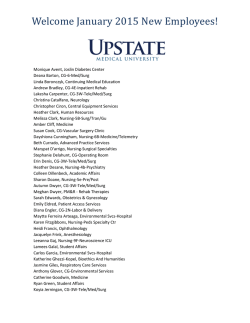
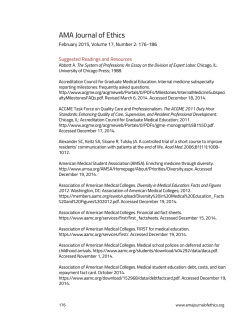
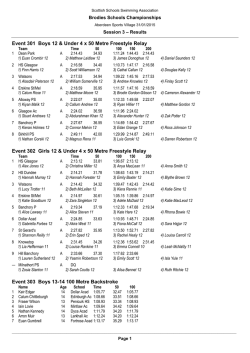
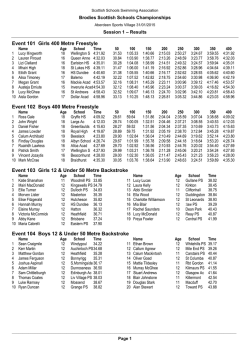
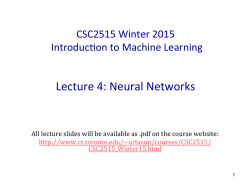
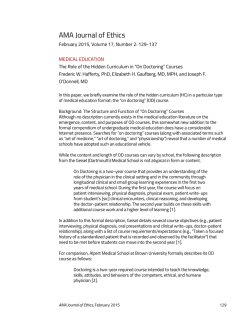
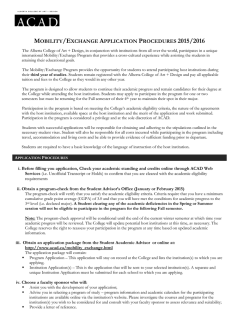
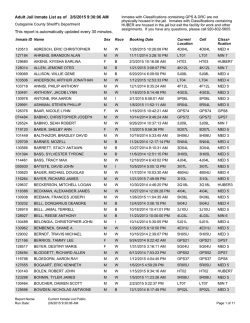
![Download [ PDF ] - journal of evidence based medicine and](http://s2.esdocs.com/store/data/000499809_1-c6b1e3dfacc473ca04f6534c5a5c7150-250x500.png)
